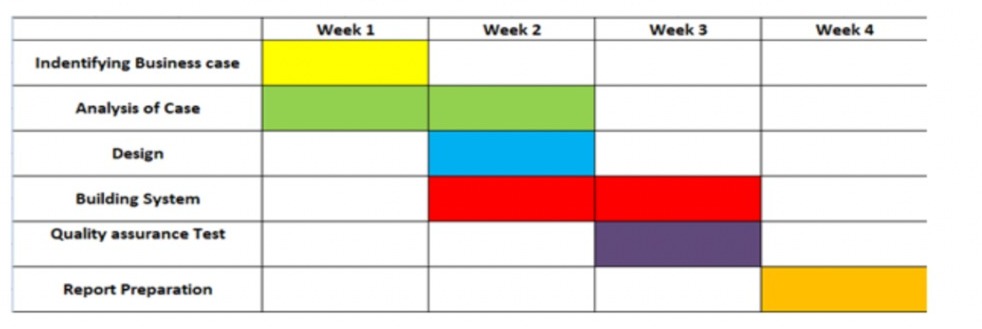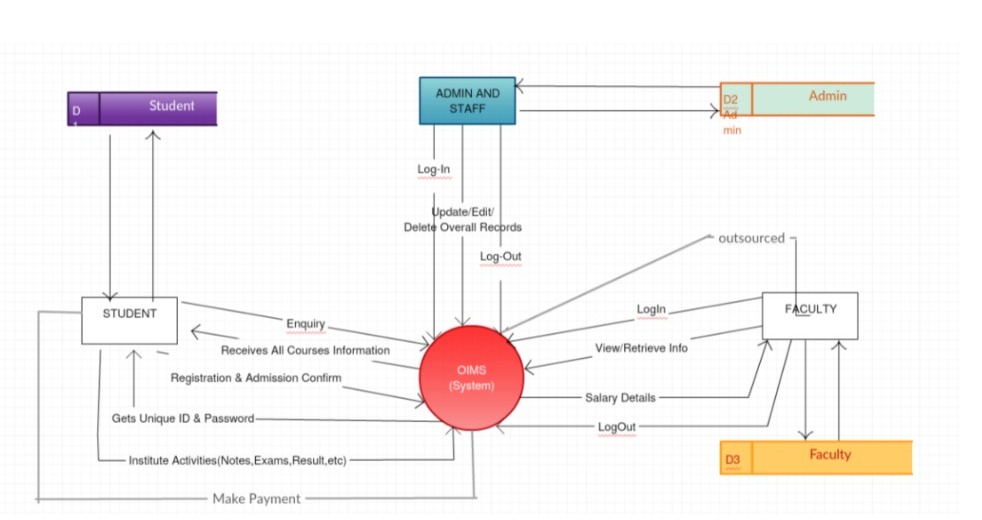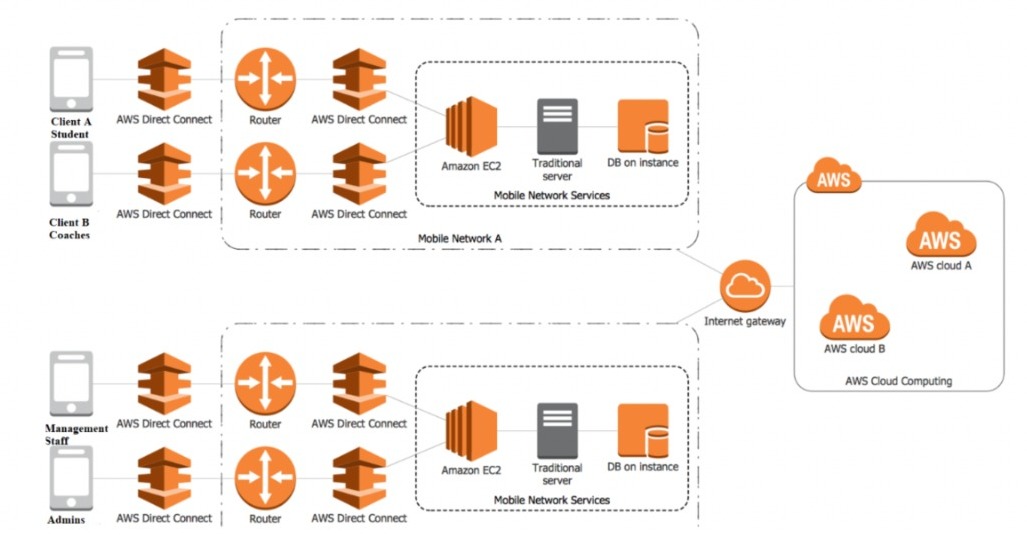CN7026 Cloud Computing Assignment Sample
HERE IS SAMPLE OF CN7026 Cloud Computing Assignment
Introduction
Management of an online educational institution can be a challenging task and would require meticulous planning as it involves many roles like the students, faculties, the staff and so on. Therefore to offer a flexible and comprehensive solution, a cloud-based platform can be the best possible alternative to deal with the intricate issues of the existing infrastructure.
This project deals with the development of a cloud-based application of an e-learning facility where the student can register for courses, and appropriate faculty members can be identified. Since this institution operates at various locations; therefore, a cloud-based system is suitable for its operation.
Project Plan
The project plan is prepared based on the following functional activities which are stated here.
- Case identification- In the first step, the business process, which is to be improved, is identified.
- Analysis- In the second step, the detailed analysis of the system is done with a particular focus on the identified issues of the system. As per the challenges, selective measures can be taken, and a comprehensive method is developed (Naveed and Ahmad, 2019).
- Design and building- The new system is designed and built on AWS.
- QA testing- The quality test is performed
- Preparing report- In this step, the final report is ready.
The entire timeline of the process is given here as follows.

Fig 1: Project Timelines
(Source: Created on MS-Excel)
The solution of Cloud architecture and system implementation
Requirement collection
There are both functional as well as non-functional requirements for the proposed system; it includes the following.
- Cloud Service Provider like AWS
- Database
- Hardware resources like desktops, routers, cables
- Human Resources involving service engineers and technicians
- System design tools
- Stable internet connectivity
Cloud Platform Selection
To get the maximum benefit out of the new system, it was necessary to formulate and design the system in a standard cloud platform. For this purpose, the “Amazon Web services” are selected. This service offers a highly customized design solution and can help with many “customer support issues” as and when required. The selection of an appropriate cloud computing program is reliant on the features and benefits offered by every individual service provided (Oladimeji et al. 2018).
Out of the services offered by Google or IBM, the AWS was the possible suitable one as it can provide a wide range of PaaS as well as IaaS services such as Elastic cloud, S3 and “Radiotal Database Service” at a minimum cost and with good quality. Owing to the constructive, positive effects, AWS has been the preferable choice.
Data centre and Standards
For designing a suitable cloud-based system for the stated educational institution integrity is the fundamental aspect, and it shall be adequately maintained. The primary function of the developed system is to have a central repository which shall contain client information as well as the information of the faculty members that can be accessed as and when required.
The AWS data pool and the data bucket is put to use for this purpose. In some cases, the SQL database is also integrated through the internal gateway to provide clarity of information (Naveed et al. 2019).
There are specific compliance standards that must be adhered to while designing the system, and therefore these are given here as follows.
- “FISMA, DIACAP, and FedRAMP”
- “SOC 1/ISAE 3402, SOC 2, SOC 3”
- “PCI DSS Level 1”
Design Architecture
Best practices
Some of the best practices that are to be taken into account for the process of formulating a proper system and updates design solution for e-learning systems is given as follows.
- Operational excellence- The designed system must comply with the objectives of the company and therefore generate the appropriate business return and must satisfy the client. For this purpose, the proposed order must be implemented systematically.
- Reliable operation- Any risk shall be adequately mitigated and all the problems must be addressed in the system (Kasim and Khalid, 2016).
- Security features- Appropriate security measures must be taken, such as the implementation of firewalls and other features to prevent security attacks.
- Efficient performance- At every stage of the implementation process, the efficiency of the system must be checked and verified.
System design and architecture

Fig 2: System Design and Architecture
(Source: Creately)
The above figure shows the overall architecture of the system. The entire system is managed through the central OIMS system where all the records are stored. This is considered as the central repository. There are three principal actors of the system; one is the student who is requesting for the coaching session, the admins and the staff are the second categories, while the other system actors are the faculties.
The balance between the faculties or the coaches and the system is done with the help of the operating staff and the admins of the system. This diagram shows how information is requested for the system, and it is obtained by retrieving them from the central repository or the database.
The existing students and the faculties have their records maintained in the database, and therefore they can be retrieved as and when required (Aldheleai et al. 2017). The admin and the staff fundamentally regulate the necessary information and are also responsible for controlling and monitoring the payments.
Problem analysis
The existing problem of the system is addressed by creating a comprehensive solution where the system is designed on the cloud platform. The registration process of the delegate is done when the delegate enters their information (Siddiqui et al. 2019).
This information is stored in the cloud database; When the database is accessed by the staff of the organization, they can view the preferred courses. Based on that, the delivery system is developed, and the coaching sessions or the classes are organized. The overall amount for every course is calculated, and then the total bill is presented to the client.
Through the process, a flexible design solution can be performed. It is to be analyzed which courses can be provided in house and which are to be outsourced. This categorization is done much easier once the system functions in a cloud-based environment.
Rationale
The purpose of the system is to give rise to a secure online learning module to manage the functionalities of the educational institution. Here the client and the coach matching process is done through an automated system, and the system records are adequately maintained in the cloud. The payment of the clients is also made safely ensuing better operation and function of the overall system.
Details of implementation
The proposed design is given as follows.

Fig 3: Cloud System Implementation
(Source: AWS)
Different types of service tiers are shown here. One level is for the Students, and the other is for the coaches. They are integrated through the “AWS direct connect”, and they are connected through the router and the network service layer. This is designed on the basis of integration of the cloud platform and the internal database of the organization.
The link is maintained through an internet gateway. The other network is selected on the basis of the operation of the company staff like the admin and other management officials.
They take the order, store client information and match the clients with the coaches (Zhang and Zhu, 2017). Based on the schedule of the training sessions, the average cost is calculated, and the customers are redirected to the payment gateway.
Reflection and analysis
It has been seen that nearly 75% of the total work has been completed through the implementation of the necessary system components. The areas that are yet to be done are the creation of the feedback management system. Where it is planned that the feedback is received from the student and the faculty and based on this further decision of assigning the classes is done. Performance standards mark existing students and faculties.
Another unfinished part of the work involves the design of the outsourcing of the faculty system. So far, the design permits only internal faculty matching with the interest of the clients. Later it has been expanded where other faculties can be outsourced as well. In this developed system, the following objectives are fulfilled (researchgate.net, 2016).
- Design of a well-defined and straightforward system architecture suited for flexible operation and clarity of process.
- Maintaining the internal business operation with proper updation of records and selection of right faculties for the right students. Often the matching was not done correctly in earlier cases.
- Enabling safer technologies for payment and thereby ensuring the reliability of operations. It maintains the integrity of information, and both the faculty and the student can view the corresponding records, thus providing a much-enhanced system operation.
- All the roles followed by every employee is well defined and well suited to the business objectives and the needs of the clients as well.
Some considerable challenges were faced in terms of developing the payment module as it has an intrinsic security layer that had to be protected (cae.net, 2020).
Conclusion
Through this assignment, it can be seen that there are several challenges in carrying out successful operation through traditional online e-learning management systems. To mitigate the risks related to the clarity of process and flexibility of the system, the AWS cloud platform is used, to get a simplistic service mode with enhanced quality and at a much-reduced cost. This work explains the design of the system and the method of its implementation to generate the maximized outcome.
Reference List
Journals
Aldheleai, H.F., Bokhari, M.U. and Alammari, A., 2017. Overview of cloud-based learning management system. International Journal of Computer Applications, 162(11).
Kasim, N.N.M. and Khalid, F., 2016. Choosing the Right Learning Management System (LMS) for the Higher Education Institution Context: A Systematic Review. International Journal of Emerging Technologies in Learning, 11(6).
Naveed, Q.N. and Ahmad, N., 2019. Critical success factors (CSFs) for cloud-based e-learning. International Journal of Emerging Technologies in Learning (iJET), 14(01), pp.140-149.
Naveed, Q.N., Qureshi, M.R.N.M., Shaikh, A., Alsayed, A.O., Sanober, S. and Mohiuddin, K., 2019. Evaluating and ranking cloud-based e-learning critical success factors (CSFs) using combinatorial approach. IEEE Access, 7, pp.157145-157157.
Oladimeji, I.W., Folashade, I.M. and Oniyide, A.B., 2018. Design of cloud-based E-learning system for virtual classroom. International Journal of Management, IT and Engineering, 8(11), pp.1-14.
Siddiqui, S.T., Alam, S., Khan, Z.A. and Gupta, A., 2019. Cloud-Based E-Learning: using cloud computing platform for an effective E-Learning. In Smart Innovations in Communication and Computational Sciences (pp. 335-346). Springer, Singapore.
Zhang, W. and Zhu, Y., 2017. A new E-learning model based on elastic cloud computing for distance education. Eurasia Journal of Mathematics, Science and Technology Education, 13(12), pp.8393-8403.
Online articles
researchgate.net, (2016, October), Requirements for e-testing services in the AfgREN cloud-based e-learning system, Available at: https://www.researchgate.net/profile/Salim_Saay/publication/328631676_A_Reference_Architecture_for_a_National_e-Learning_Infrastructure/links/5d9343bf92851c33e94b8b70/A-Reference-Architecture-for-a-National-e-Learning-Infrastructure.pdf#page=141, [Accessed on: 28.05.20]
Website:
cae.net, (2020), 5-advantages-of-using-a-cloud-based-lms-for-your-language-courses , Available at: https://www.cae.net/5-advantages-of-using-a-cloud-based-lms-for-your-language-courses/, [Accessed on: 28.05.20]
24/7 Chat Support | Get A+ Grade | Written by Top-Notch Subject Experts | 20% Off 1st Order |
Know more about UniqueSubmission’s other writing services:

